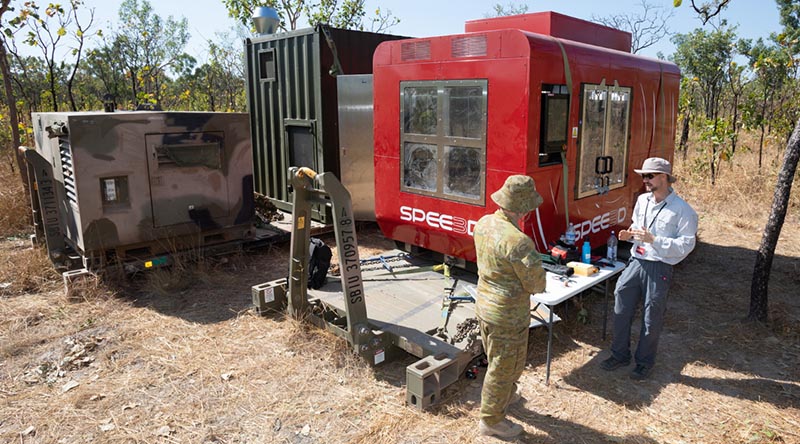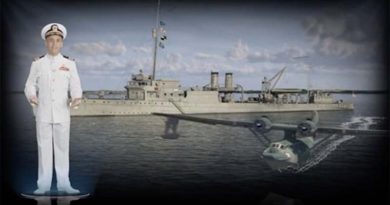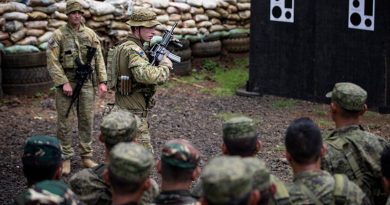1CSSB taking 3D metal printer for another bush trial
Share the post "1CSSB taking 3D metal printer for another bush trial"

Darwin-based soldiers will deploy the WarpSPEE3D metal printer for a second two-week field trip as part of a year-long trial between the Australian Army and SPEE3D.
FILE PHOTO (June 2020): A WarpSPEE3D 3D printer deployed at Mount Bundey Training Area, NT. Photo by Petty Officer Peter Thompson.
Soldiers from the 1st Combat Service Support Battalion (1CSSB) will use the 4.5 tonne 3D metal printer to print repair parts, using the patented cold-spray technology developed by SPEE3D.
In addition to the printer, 1CSSB will deploy their improved machine-shop facility for the first time, enabling post-print machining and heat treatment in the field.
Commanding officer 1CSSB Lieutenant Colonel Kane Wright said he valued the benefits of custom-made solutions in the tactical environment.
“Custom-made parts designed and printed in the field means we can get our equipment back in action and return to our primary role on the battlefield faster,” Lieutenant Colonel Wright said.
“We can strengthen the supply chain by employing modern technology like this to make exactly what we need at short notice.”
From 17 to 28 August, the engineering soldiers will test their new skills learnt during an intensive design program in collaboration with Charles Darwin University and SPEE3D, which began in February this year.
“Our tech savvy soldiers now have the skills and the technology to lessen the administration and logistics burden – to be their own solution without reaching back to base or a traditional commercial manufacturer,” Lieutenant Colonel Wright said.
SPEE3D CEO Byron Kennedy said the second field deployment would prove the technology is a genuine solution for expeditionary 3D metal printing.
“This trial will demonstrate the WarpSPEE3D is a robust workhorse, capable of printing real parts and solving real problems in the field,” Mr Kennedy said.
“It will also prove that soldiers can take control of the whole workflow – creating the spare parts they need from design to printing and post-processing, right there where they need them.”
The printer is capable of printing large metal parts up to 40kg at 100g per minute – i.e 6.6 hours for 40kg.
.
.
.
.
.
.

.
.
Share the post "1CSSB taking 3D metal printer for another bush trial"





